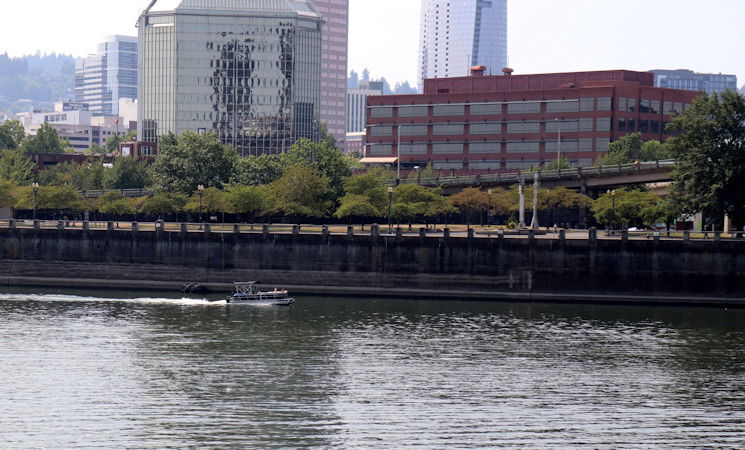Army Corps of Engineers warns: Drownings on the rise; drastic difference between air, water temperature can kill

PORTLAND, Ore. (KTVZ)-- With the onset of record-breaking heat across much of the Pacific Northwest, it’s imperative that people wear life jackets while swimming, boating and fishing. While air temperatures may be high, water temperatures can be much lower and can be deadly, according to water safety statistics.
That’s because falling into water unexpectedly can cause involuntary gasping, even with water as warm as 77 degrees, according to the National Weather Service. A sudden fall can also inure or disorientate someone, which can make it more difficult to recover from the incident. Wearing a life jacket can help limit fatalities, as U.S. Army Corps of Engineer (USACE) data shows that 89 percent of drowning victims are not wearing life jackets.
“A lot of people who drown don’t anticipate being in the water,” said Tom Conning, Northwestern Division, USACE public affairs specialist. “Another problem is people overestimate their swimming ability in open water – men are especially arrogant about their swimming abilities and strength.”
Government organizations continually warn the public about water safety. Despite the advice, men still make up most drowning victims, at 88 percent according to USACE statistics.
“I understand you can still drown, even if you are wearing a life jacket,” said Conning. “My dad was an extremely experienced whitewater kayaker, who took safety seriously, wore his life jacket and still drowned. He got caught in a snag that the group he was with couldn’t see. No family should deal with that trauma if its avoidable, which can be, if people wear their life jackets.”
Northwestern Division has three district offices in Washington state and Oregon. Both states have been seeing an increase in drownings. According to the Washington State Department of Health, drownings have steadily increased from 89 in 2016, to 127 in 2020. Walla Walla District had four drownings at its recreation areas in 2022. The Oregon Health Authority saw 22 more drownings in natural water, from 35 in 2020 to 57 in 2021. Portland District had five drownings at its locations in last year.
- USACE officials urge users to take precautions, such as:
Wearing a life jacket: it will help you survive an unexpected fall into the water and can save your life if you become exhausted. - Knowing your swimming abilities: swimming in natural waters is different from swimming in a pool, and your swimming ability decreases with age.
- Expecting the unexpected: if you fall or jump into water that is colder than 77 degrees, you can inhale water from involuntary gasping.
- Understanding “boater’s hypnosis”: this can slow your reaction time almost as much as intoxication.
- Eliminating alcohol consumption: Alcohol induces an inner ear condition (caloric labyrinthitis) that can cause disorientation when underwater.
Staff also stress the importance of water safety year-round, but especially during the summer season because that is when most public recreation fatalities occur.
